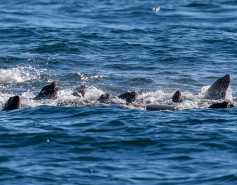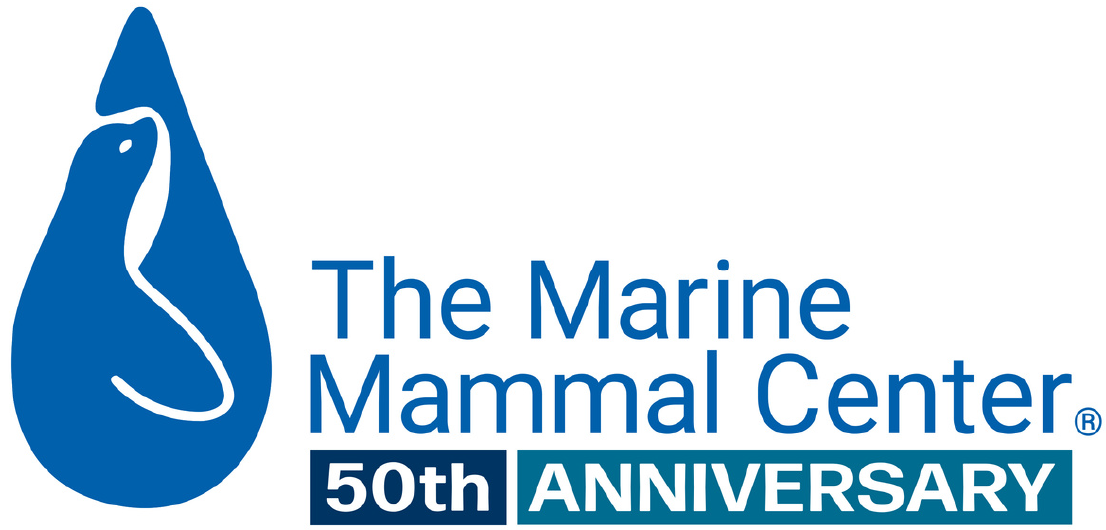
Effectiveness of Antibiotics in Treating Leptospirosis in California Sea Lions
- Leptospirosis
- Medicine
Abstract
Stranded California sea lions (Zalophus californianus) along the California coast have been diagnosed with leptospirosis every year since at least the 1980s. Between September 2010 and November 2011, we followed 14 stranded California sea lions that survived to release and evaluated antibiotic efficacy in eliminating leptospiruria (urinary shedding of leptospires). Leptospiruria was assessed by real-time PCR of urine and urine culture, with persistence assessed using longitudinally collected samples. Serum chemistry was used to assess recovery of normal renal function. Microscopic agglutination testing (MAT) was performed to assess serum anti-Leptospira antibody titers, and the MAT reactivity patterns were consistent with L. interrogans serovar Pomona infection frequently observed in this population. Animals were initially treated for 6 to 16 d (median = 10.5; mean = 10.8) with antibiotics from the penicillin family, with some receiving additional antibiotics to treat other medical conditions. All urine cultures were negative; therefore, the presence of leptospiruria was assessed using PCR. Leptospiruria continued beyond the initial course of penicillin family antibiotics in 13 of the 14 sea lions, beyond the last antibiotic dose in 11 of the 14 sea lions, beyond recovery of renal function in 13 of the 14 sea lions, and persisted for at least 8 to 86 d (median = 45; mean = 46.8). Five animals were released with no negative urine PCR results detected; thus, their total shedding duration may have been longer. Cessation of leptospiruria was more likely in animals that received antibiotics for a greater duration, especially if coverage was uninterrupted. Real-time PCR results indicate that an antibiotic protocol commonly used to treat leptospirosis in rehabilitating California sea lions does not eliminate leptospiruria. It is possible that antibiotic protocols given for a longer duration and/or including other antibiotics may be effective in eliminating leptospiruria. These results may have important human and animal health implications, especially in rehabilitation facilities, as Leptospira transmission may occur through contact with animals with persistent leptospiruria.
Prager, K.C., Alt, D. P., Buhnerkempe, M.G., Greig, D.J., Galloway, R.L., Wu, Q., Gulland, F.M.D., Lloyd-Smith, J.O. 2015. Antibiotic efficacy in eliminating leptospiruria in California sea lions (Zalophus californianus) stranding with leptospirosis. Aquatic Mammals 41(2): 203-212.
Related Publications
{"image":"\/Animals\/Wild\/California sea lion\/cropped-images\/sea-lions-in-water-photo-c-bill-hunnewell-2140-212-1308-1022-1603918234.jpg","alt":"large group of California sea lions in the water","title":"Detecting the Spread of Leptospirosis Through Asymptomatic Carriers","link_url":"https:\/\/www.marinemammalcenter.org\/publications\/detecting-the-spread-of-leptospirosis-through-asymptomatic-carriers","label":"Research Paper"}

{"image":"\/Animals\/Patients\/California sea lions\/cropped-images\/csl-by-bill-hunnewell-c-the-marine-mammal-center-5-0-1-3112-2431-1603919011.jpg","alt":"California sea lion diving into a pool","title":"First Report of Asymptomatic Carrier Transmission of Leptospirosis","link_url":"https:\/\/www.marinemammalcenter.org\/publications\/first-report-of-asymptomatic-carrier-transmission-of-leptospirosis","label":"Research Paper"}

{"image":"\/Animals\/Wild\/California sea lion\/cropped-images\/sea-lions-underwater-baja-shutterstock-186-4-4173-3260-1603919420.jpg","alt":"California sea lions underwater","title":"Seasonal Migration Contributes to Spread of Leptospirosis","link_url":"https:\/\/www.marinemammalcenter.org\/publications\/seasonal-migration-contributes-to-spread-of-leptospirosis","label":"Research Paper"}

{"image":"\/Animals\/Patients\/California sea lions\/cropped-images\/csl-eating-by-bill-hunnewell-c-the-marine-mammal-center-0-361-1799-1405-1617816863.jpg","alt":"California sea lion eating a fish","title":"Predicting Prognosis in Wildlife Rehabilitation: A Case Study of Leptospirosis in Sea Lions","link_url":"https:\/\/www.marinemammalcenter.org\/publications\/predicting-prognosis-in-wildlife-rehabilitation-a-case-study-of-leptospirosis","label":"Research Paper"}

Predicting Prognosis in Wildlife Rehabilitation: A Case Study of Leptospirosis in Sea Lions
Read MoreRelated News
{"image":"\/Animals\/Patients\/California sea lions\/2025\/cropped-images\/dottie-csl-photo-by-bill-hunnewell-218-0-1270-992-1759777087.jpg","alt":"California sea lion","title":"LA Times: Marine mammals are dying in record numbers along the California coast","link_url":"https:\/\/www.marinemammalcenter.org\/news\/la-times-marine-mammals-are-dying-in-record-numbers-along-the-california-coast","label":"In the News","date":"2025-10-03 02:00:00"}

LA Times: Marine mammals are dying in record numbers along the California coast
October 3, 2025
Read More{"image":"\/Animals\/Wild\/Humpback whale\/cropped-images\/humpback-whale-sea-lions-photo-c-bill-hunnewell-102-0-1270-992-1743014972.jpg","alt":"A California sea lion jumps out of the ocean next to a humpback whale showing its tail and another whale showing its back.","title":"What is the Loudest Animal on Earth? And Other Animal Trivia","link_url":"https:\/\/www.marinemammalcenter.org\/news\/what-is-the-loudest-animal-on-earth-and-other-animal-trivia","label":"News Update","date":"2025-03-26 07:00:00"}

{"image":"\/Animals\/Patients\/California sea lions\/2024\/csl-autumn-photo-by-chris-deimler-c-the-marine-mammal-center.jpg","alt":"A California sea lion with a small satellite tag on its back walks on a rocky beach toward the ocean.","title":"From Treating Sick Sea Lions to Tracking Them in the Wild: Follow Autumn","link_url":"https:\/\/www.marinemammalcenter.org\/news\/from-treating-sick-sea-lions-to-tracking-them-in-the-wild-follow-autumn","label":"Patient Update","date":"2025-02-27 15:23:46"}

From Treating Sick Sea Lions to Tracking Them in the Wild: Follow Autumn
February 27, 2025
Read More{"image":"\/Misc\/cropped-images\/leashed-dog-on-beach-shutterstock-10-10-5572-4352-1696014237.jpg","alt":"a golden retriever lying on a sandy beach with a leash and harness","title":"How to Keep Your Dog Safe on Beaches","link_url":"https:\/\/www.marinemammalcenter.org\/news\/how-to-keep-your-dog-safe-on-beaches","label":"News Update","date":"2023-09-29 02:00:00"}

